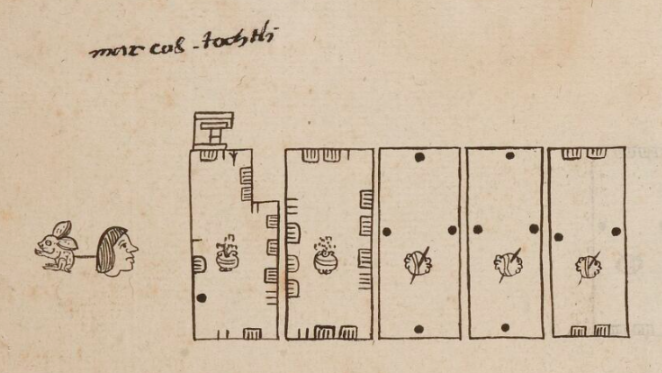Tochtli (Verg7r)
This black-line drawing of the simplex glyph for the personal name Tochtli (“Rabbit,” attested here as a man’s name) shows a small animal in profile, facing toward the viewer's left. It has large, rounded ears standing up somewhat, an open eye, and a turned up nose. It is sitting on its back haunches. Its front arms are raised, giving it vitality. Its coat has some texturing.
Stephanie Wood
The rabbit is both a day sign in the religious divinatory calendar (tonalpohualli) and a year sign in the year count (xiuhpohuall), which explains why it was a popular name. The word tochtli was also slang for women's genitals.
Stephanie Wood
marcos.tochtli
Marcos Tochtli
Stephanie Wood
1539
Jeff Haskett-Wood
rabbits, conejos, días, calendario, xiuhpohualli, año, turquesa, xihuitl

toch(tli), rabbit, https://nahuatl.wired-humanities.org/content/tochtli
El Conejo
Codex Vergara, folio 7r, https://gallica.bnf.fr/ark:/12148/btv1b84528032/f21.item
The non-commercial reuse of images from the Bibliothèque nationale de France is free as long as the user is in compliance with the legislation in force and provides the citation: “Source gallica.bnf.fr / Bibliothèque nationale de France” or “Source gallica.bnf.fr / BnF.” We would also appreciate a citation to the Visual Lexicon of Aztec Hieroglyphs, https://aztecglyphs.wired-humanities.org/.



